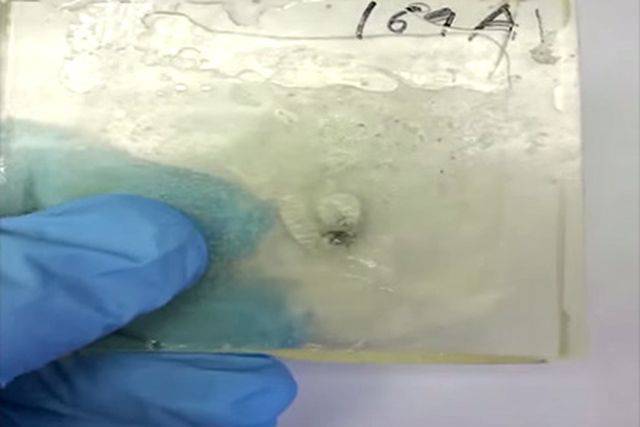Scientists have created a self-squeezing after hit material

Funds for the relevant research were allocated by the US space agency. NASA experts plan to use the new material to provide additional protection for spacecraft and vehicles from possible damage, which are very dangerous. The material would ideally fit into the linings of spacecraft, ensuring reliable sealing in the event of an unforeseen on-board situation that threatens the lives of astronauts. It is also planned to use it as a material for constructing modern space suits for astronauts: the slightest damage that appeared on the spacesuit shell could be repaired in a few seconds, which would prevent the astronaut from escaping and saving life. At the same time, space is far from the only place in which a new technology would take root. Researchers from Michigan say that it will find its application in quite earthly constructions, in particular, in the automotive industry and modern gadgets, the same smartphones.
The American researchers themselves have already compared the material invented with the “liquid metal” from which the famous cyborg T-1000 was made from the most popular sci-fi action movie “Terminator 2”. This cyborg was not subject to simple mechanical destruction, due to the properties of the material from which it was constructed. The Terminator T-1000 model could quickly recover, taking its original form, for example, after being hit by bullets of different caliber or by exposure to explosives. It is precisely to obtain such a model of self-healing material and modern researchers strive.
It should be noted that previously scientists have repeatedly demonstrated self-healing materials to the public, but all of them did not have the ability to recover in seconds. So in 2014, scientists from the University of Illinois at Urbana-Champaign demonstrated similar material. However, the sample created by them could only bore holes, the diameter of which did not exceed 8 millimeters, and the time for tightening the holes was almost one hour 3. In the same year, a group of researchers from IBM Research demonstrated a polymer that, on 90%, consisted of a liquid that was able to put itself together after cutting into separate pieces, provided that these pieces would be located close enough to each other. Other materials created today should stop bullets and shells altogether. For example, futuristic tissues from human skin cells and spider silk, which could cushion a blow from a shot, or consisting of a layer of graphene just one atom thick. All these developments someday will be able to significantly change our lives.
Information sources:
http://www.ridus.ru/news/195948
http://gearmix.ru/archives/21889
http://lenta.ru/news/2015/08/28/nasafund
http://info.sibnet.ru/?id=441145
Information